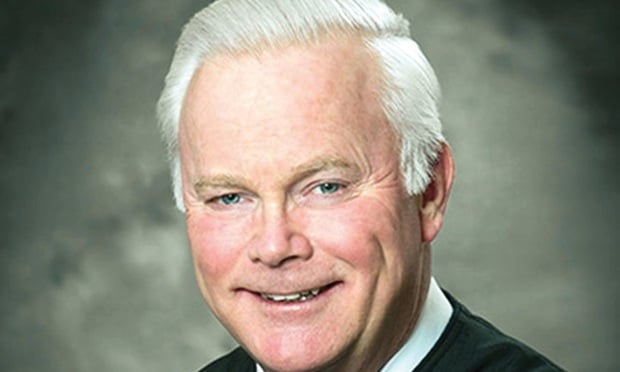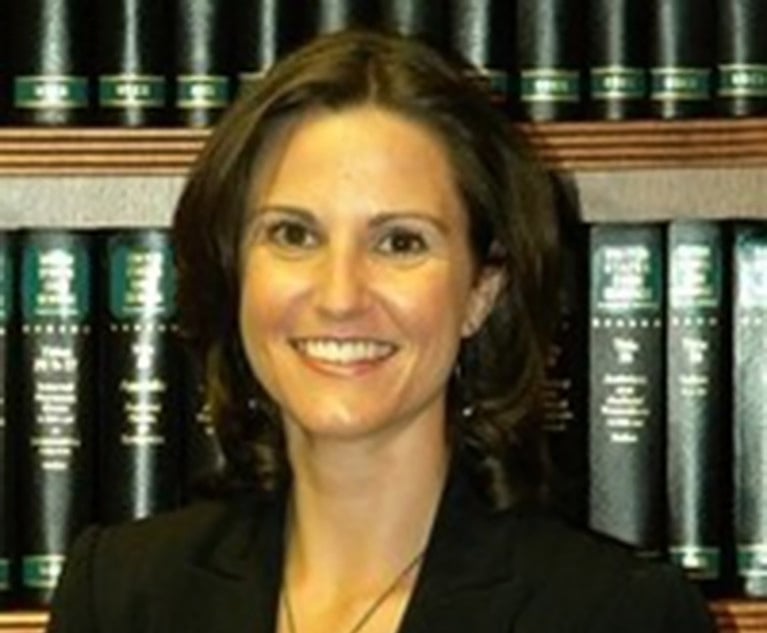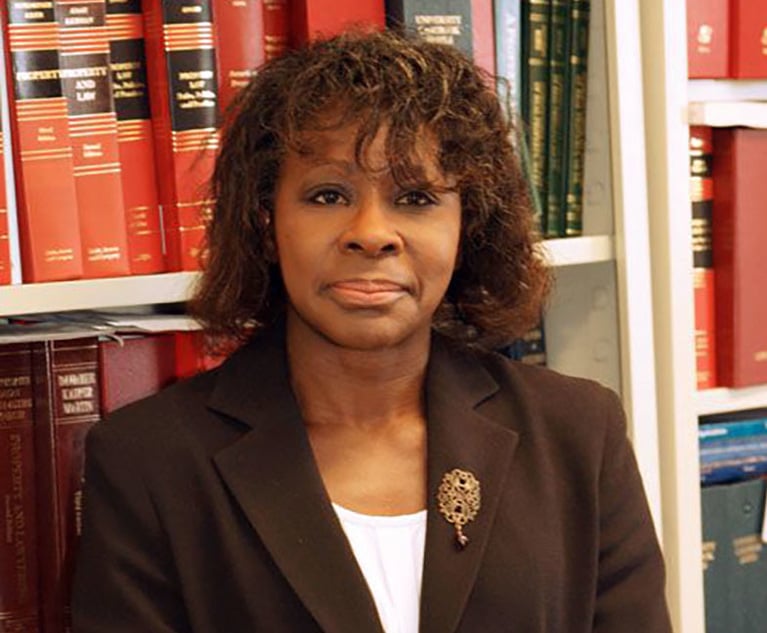Judiciary's Duty to Maintain Public Faith and Trust
Gerald J. Whalen, Presiding Justice of the Appellate Division, Fourth Department, writes: Public faith and judicial independence demands that we work against such perceptions in order to ensure that our own legacy is one of leaving the courthouse stronger than we found it.
January 11, 2019 at 11:25 AM
5 minute read
 Gerald J. Whalen, Presiding Justice, Appellate Division, Fourth Department
Gerald J. Whalen, Presiding Justice, Appellate Division, Fourth Department
Just before Thanksgiving, Chief Justice John Roberts commented that “We do not have Obama judges or Trump judges, Bush judges or Clinton judges.” Mark Sherman, “Roberts, Trump spar in extraordinary scrap over judges,” Associated Press (Nov. 21, 2018). Strong opinions followed regarding the practical reality of that statement, and yet there can be no dispute that the appearance of such partisanship is antithetical to our judicial system. This is because, no less than the attorneys, judges, court officers, and staff who endeavor daily to ensure a just resolution of disputes, the effectiveness of our system also requires the public's faith and trust. Indeed, this faith is integral to the rule of law itself, which “presupposes a functioning judiciary respected for its independence, its professional attainments, and the absolute probity of its judges.” New York State Board of Elections v. Lopez Torres, 552 U.S. 196, 212 (2008) (Kennedy, J., concurring).
Maintaining this faith is no small task, and it is a duty of which every judge from the town hall to the Supreme Court must be particularly conscious from the moment he or she first puts on the robe. This is a moment that changes us, certainly, but more importantly, we must remember that this moment changes the public's perception of us. Prior to this point, a judicial candidate's identity was inextricably attached to his or her political affiliation. Once the bench is attained, however, that identity must be shed and a new mantle of impartiality donned to ensure, both inside and outside of the courtroom, that this political past is not seen as prologue. This has never been an easy task, but particular attention must be paid in an age where the immediacy of mainstream and social media reaction has the potential to paint our words and actions with unintended political spin. This is far from a matter of mere decorum where “the appearance of bias demeans the reputation and integrity not just of one jurist, but of the larger institution of which he or she is a part.” Williams v. Pennsylvania, 136 S. Ct. 1899, 1909 (2016). The appearance of impartiality and the separation of the court's work from partisan gamesmanship are therefore as much requirements for public faith in the courts and the judges that preside therein as the absence of actual bias.
When considering how to traverse this tightrope of ensuring impartiality in what feels to be an increasingly partisan world, it is always useful to consider those who have successfully arrived at the other side. His retirement from the bench this past December brings inescapably to mind the Honorable Eugene F. Pigott Jr. Named Erie County Attorney in 1982 and appointed initially to the trial bench and almost immediately to the Appellate Division following his subsequent election, Judge Pigott is hardly a stranger to politics. Media coverage at the time of his elevation to the Court of Appeals in 2006 painted his appointment with a partisan brush. Whether mere speculation or an accurate reflection of the governor's intent, it was posited by commentators that then-Governor Pataki appointed Judge Pigott as part of an effort to skew the court to the right, to create a tough-on-crime court more aligned with perceived conservative ideals. John Caher, “Appointments to Top Court Bring More Conservative Approach,” Law.com (Jan. 2, 2007); Elizabeth Benjamin, “Pataki's Court of Appeals Pick,” Times Union (Aug. 18, 2006); Michael Cooper, “Pataki Appoints Fifth Republican to Highest Court,” New York Times (Aug. 19, 2006). Yet, to my mind, Judge Pigott exemplified during his tenure the ideal that, although the path to the bench may pass through the electoral ballot, there are no “Pataki judges” and no 'Cuomo judges.' His legacy is unshaded by the expectations of his appointment, but instead he is appropriately lauded for his pragmatism, noted for his recognition of the importance of criminal defendants' rights, and reflected upon as ideologically unpredictable. See, e.g., Timothy Murphy, “Judge Pigott Returns to Trial Bench After Illustrious Appellate Career,” NYSBA Leaveworthy Newsletter Vol. VI No. 1 (Spring 2017); Vincent Bonventre, “NY Court of Appeals: The Paterson v. Skelos Decision—The Judges, Politics, Votes, and Opinions,” New York Court Watcher (Sept. 22, 2009); Joel Stashenko, “On Brink of Departure, Pigott Discusses His Approach to Law,” New York Law Journal (Dec. 27, 2016).
Judge Pigott, a frequent dissenter, also reminds us that the absence of partisanship is not the absence of opinion. Murphy, supra; Stashenko, supra. Dissent is a healthy and necessary part of our judicial process, a process aided by the different analytical approaches of its judges. Further, my concern regarding the appearance of partisanship in the judiciary is not meant to suggest that either the media or other court watchers should report on our work with anything less than a critical eye—indeed, such a mirror is a necessary measure of public perception. What we seek to avoid is the presentation of oneself as a pro-prosecution, pro-plaintiff, pro- or con-anything judge and thereby create an expectation that the system is skewed from the start. It is incumbent on each of us to guard against the creation of a legitimate perception that a court, any court, is a “political prize” to be won by the current majority. Adam Liptak, “Roberts, Leader of Supreme Court's Conservative Majority, Fights Perception That It Is Partisan,” New York Times (Dec. 23, 2018). Public faith and judicial independence demands that we work against such perceptions in order to ensure that our own legacy, like that of Judge Pigott, is one of leaving the courthouse stronger than we found it.
This content has been archived. It is available through our partners, LexisNexis® and Bloomberg Law.
To view this content, please continue to their sites.
Not a Lexis Subscriber?
Subscribe Now
Not a Bloomberg Law Subscriber?
Subscribe Now
NOT FOR REPRINT
© 2025 ALM Global, LLC, All Rights Reserved. Request academic re-use from www.copyright.com. All other uses, submit a request to [email protected]. For more information visit Asset & Logo Licensing.
You Might Like
View All


Trending Stories
Who Got The Work
J. Brugh Lower of Gibbons has entered an appearance for industrial equipment supplier Devco Corporation in a pending trademark infringement lawsuit. The suit, accusing the defendant of selling knock-off Graco products, was filed Dec. 18 in New Jersey District Court by Rivkin Radler on behalf of Graco Inc. and Graco Minnesota. The case, assigned to U.S. District Judge Zahid N. Quraishi, is 3:24-cv-11294, Graco Inc. et al v. Devco Corporation.
Who Got The Work
Rebecca Maller-Stein and Kent A. Yalowitz of Arnold & Porter Kaye Scholer have entered their appearances for Hanaco Venture Capital and its executives, Lior Prosor and David Frankel, in a pending securities lawsuit. The action, filed on Dec. 24 in New York Southern District Court by Zell, Aron & Co. on behalf of Goldeneye Advisors, accuses the defendants of negligently and fraudulently managing the plaintiff's $1 million investment. The case, assigned to U.S. District Judge Vernon S. Broderick, is 1:24-cv-09918, Goldeneye Advisors, LLC v. Hanaco Venture Capital, Ltd. et al.
Who Got The Work
Attorneys from A&O Shearman has stepped in as defense counsel for Toronto-Dominion Bank and other defendants in a pending securities class action. The suit, filed Dec. 11 in New York Southern District Court by Bleichmar Fonti & Auld, accuses the defendants of concealing the bank's 'pervasive' deficiencies in regards to its compliance with the Bank Secrecy Act and the quality of its anti-money laundering controls. The case, assigned to U.S. District Judge Arun Subramanian, is 1:24-cv-09445, Gonzalez v. The Toronto-Dominion Bank et al.
Who Got The Work
Crown Castle International, a Pennsylvania company providing shared communications infrastructure, has turned to Luke D. Wolf of Gordon Rees Scully Mansukhani to fend off a pending breach-of-contract lawsuit. The court action, filed Nov. 25 in Michigan Eastern District Court by Hooper Hathaway PC on behalf of The Town Residences LLC, accuses Crown Castle of failing to transfer approximately $30,000 in utility payments from T-Mobile in breach of a roof-top lease and assignment agreement. The case, assigned to U.S. District Judge Susan K. Declercq, is 2:24-cv-13131, The Town Residences LLC v. T-Mobile US, Inc. et al.
Who Got The Work
Wilfred P. Coronato and Daniel M. Schwartz of McCarter & English have stepped in as defense counsel to Electrolux Home Products Inc. in a pending product liability lawsuit. The court action, filed Nov. 26 in New York Eastern District Court by Poulos Lopiccolo PC and Nagel Rice LLP on behalf of David Stern, alleges that the defendant's refrigerators’ drawers and shelving repeatedly break and fall apart within months after purchase. The case, assigned to U.S. District Judge Joan M. Azrack, is 2:24-cv-08204, Stern v. Electrolux Home Products, Inc.
Featured Firms
Law Offices of Gary Martin Hays & Associates, P.C.
(470) 294-1674
Law Offices of Mark E. Salomone
(857) 444-6468
Smith & Hassler
(713) 739-1250







